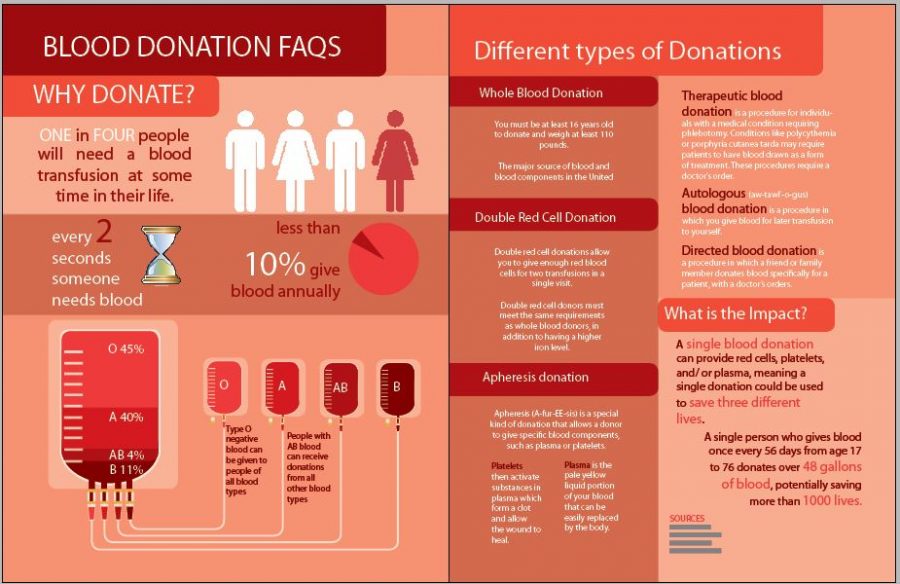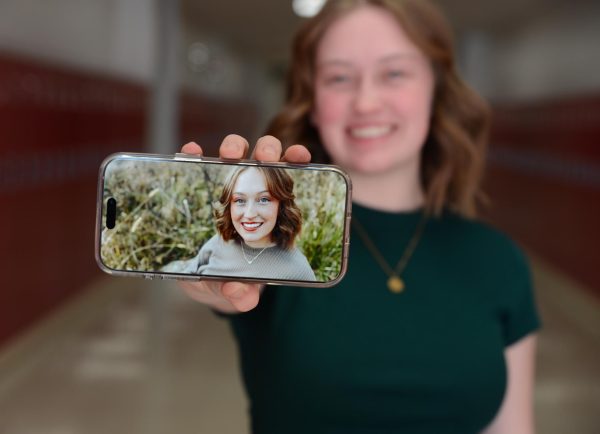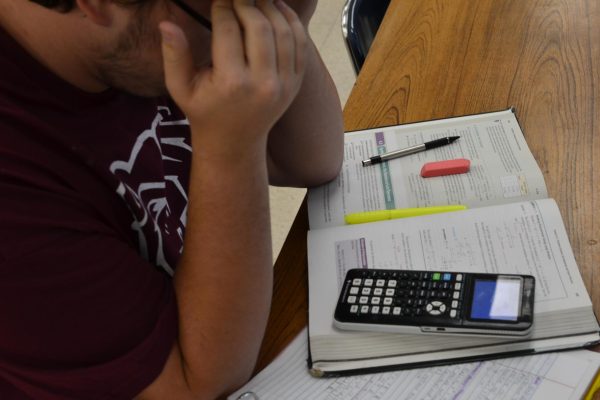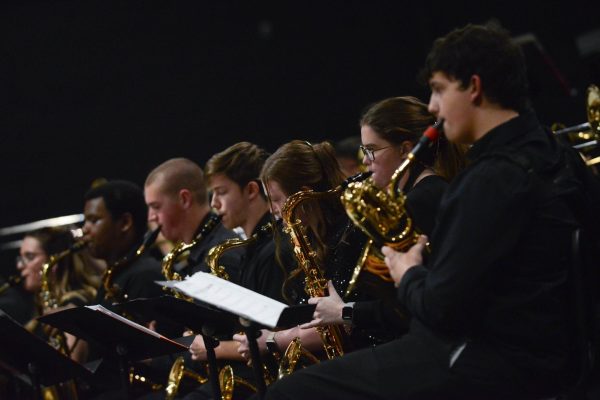Community Blood Center of the Ozarks provides blood to forty area hospitals
The Community Blood Center of the Ozarks is located in Springfield, Missouri, but they travel to great lengths to retrieve many people’s blood from their veins. Even though many people can say they have donated blood, in reality, only a fifth of people actually donate. Chris Pilgrim is the Media Relations Director for The Community Blood Bank (CBCO) and gave information about the bank and how the process of donation works.
“Community Blood Center of the Ozarks is in charge of providing all the blood to patients in forty area hospitals. We deliver to thirty-nine county regions that have hospitals in Southwest Missouri, Northwest Arkansas, and Southeast Kansas. It goes from about Rolla and Lake of the Ozarks, down through Springfield and to Branson, Joplin, to Arkansas in the Springdale and Fayetteville area,” Pilgrim said.
The amount of blood drives that many schools and facilities host come in around thirteen hundred a year-and that’s just the surrounding areas participation. CBCO hosts many of these drives
“We host a lot. We have four donor centers-which are fixed site donor centers. One is in Springfield, one in Joplin, one in Springdale, Arkansas, and one in Bentonville, Arkansas. We hold probably twenty-five blood drives every week in areas around our service areas. Twenty-five a week, fifty-two weeks a year; that’s a lot.”
CBCO puts many of its resources in many different schools with the amount of turn out they get at every drive.
“We do a lot of blood drives at high schools-almost forty percent of the total blood that we collect that is donated to the Community Blood Center comes from high schools and colleges. We spend a lot of time and resources in our high schools and our colleges, [because] you guys are just great to be able to give at the rate you do,” Pilgrim said.
The question is: where does the bag of blood go after being taken?
“The bag of blood is taken back to our facility here in Springfield, where we start to take apart components. No one ever gets a whole blood transfusion from a donation-we’re dividing that blood into red cells, platelets and plasma, which are three components of blood. So those three components will go to different people, which is why we say one donation can save multiple lives. While the blood is being processed and separated here, we are sending test tubes of that blood on a daily basis to a blood testing laboratory in Atlanta, Georgia. In Atlanta is a number of different blood-related kinds of diseases that the Food and Drug Administration tells us that we have to test for-stuff like HIV, syphilis, West Nile virus, the Zika virus is a new one [also]. They test the blood there, give us the okay, then the blood is now released and shipped to a hospital,” Pilgrim said.
The process of donating is long and time consuming. Prior to the actual donation, CBCO has each potential donor answer a series of questions regarding one’s health to make sure the blood one is giving is clean and can be given to another person.
“Before you come into a blood drive, you have to have photo identification. You’ll pass that along at the registration table, we’ll enter the correct information. Then we’ll give you some information to read, and a questionnaire. With those questions, we’re not trying to pry, but to ascertain whether the blood you’re about to give is of good quality or not. After you answer those, you’ll go into another area where you’ll get a mini-physical. We take your blood pressure, your pulse, your temperature. We also take a tiny bit of blood from your finger and test it for it’s hemoglobin or iron level. If you pass all those qualifications, it’s time to go on the actual donation itself. That donation only takes about five to ten minutes. The actual needle is inserted in your arm isn’t very painful, contrary to popular belief. After the donation, you go and have a refreshment and a snack, and after that, you’re finished. The entire donation process, from start to finish, takes about forty-five minutes to an hour, and a very small amount of time is spent with a needle in your arm,” Pilgrim said.
The Community Blood Center has many ways to contact with surrounding communities regarding the amount of blood that is needed at that time. The blood center uses a ‘stop light’ system that is described in three colors, red, yellow and green.
“It takes about two hundred donations every day to meet one day’s needs, whether it’s a Thursday, a holiday or a snow day; sometimes it can be difficult. We use a stoplight system to better tell people about our blood needs. We like to have at least a three-day supply on hand, that way we can meet an emergency if it arises. If everything’s good and we’ve hit a three-day supply on a type, we’re at what we consider a ‘Code Green’ level. If we ever drop down below a two-day supply of any particular type we’ll call a ‘Code Yellow’ alert, and a that means that we got less than a two-day supply, so people need to give. If we ever drop down to less than a one-day supply, that is approaching a very serious shortage. We’ll call a ‘Code Red’ on that particular product. The stoplight system is what we’re talking about with three-days’ worth, two-days’ worth and one-day’s worth, [and it’s] something that everybody should be familiar with,” Pilgrim said.
Being in red zone is a crucial situation for the Community Blood Bank. However, due to the immediate response from people willing to donate, they have rarely reached into the red zone.
“Over the last two weeks we’ve been in a code red for a couple of different products, type O- and type O+. It’s really rare for us to be in a code red-this is the second time in two years that it’s happened to us-we just now came off of it and came back to yellow because we’ve had a really good response from our colleges and high schools in particular. It’s really uncommon to have a code red, but people really need to pay attention if we do, because the blood situation is getting critical,” Pilgrim said.
The tornado hitting Joplin in 2011 was one event that most Missourians can’t forget. The Community Blood Bank, in particular, was a vital role in the town’s recovery after the natural disaster. Any natural disaster can affect many people, but CBCO is hit hard to provide blood to people in hospitals.
“We are an independent blood center, but we are a part of a group of independence called America’s Blood Centers. What that group membership allows us to do is to pool our resources in case of a natural disaster. During hurricane Katrina, we were able to successfully ship blood to that region in the aftermath of that hurricane-that’s one example of us helping on a national stage. The Joplin tornado was certainly another thing that taxed our blood supply. We had ample supply of blood at the time the tornado hit, there was a great donor response after the event to try to refill our coffers, and it was so much so that we actually had to turn some donors away and say ‘come back another time.’ That’s why we have that three-day reserve; if there’s ever a case where we need two hundred and fifty donations immediately, we want to have it on hand, but if we don’t, we have the ability to import it from other parts of the country,” Pilgrim said.
Donating blood is a bit taboo for people; the fear of needles-or blood itself-is enough to make them second guess whether they want to donate or not. But the act of giving blood is an important one, having the ability to save lives.
“If somebody’s never donated blood before, I would tell them to try it once-what I’m betting is that number one is that they’ll realize it doesn’t hurt very much, and number two, after the donation they’ll realize that they really help somebody. It is a life-changing thing, to give blood, and have it be used on someone else. Our website is CBCO.org, you can find a blood drive coming to your area from that website,” Pilgrim said.








